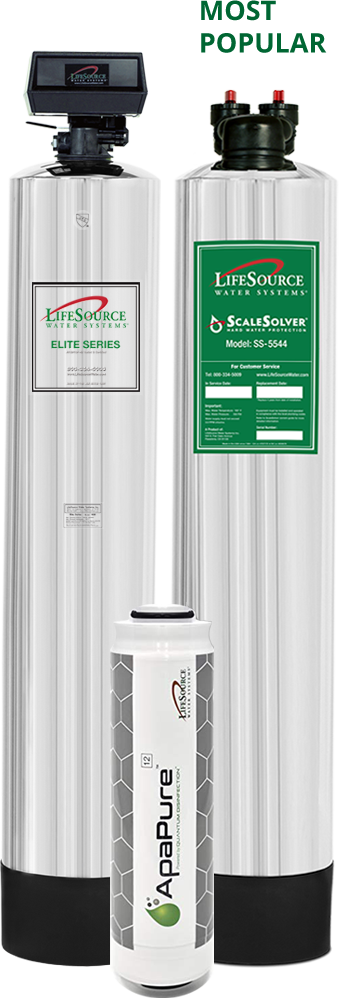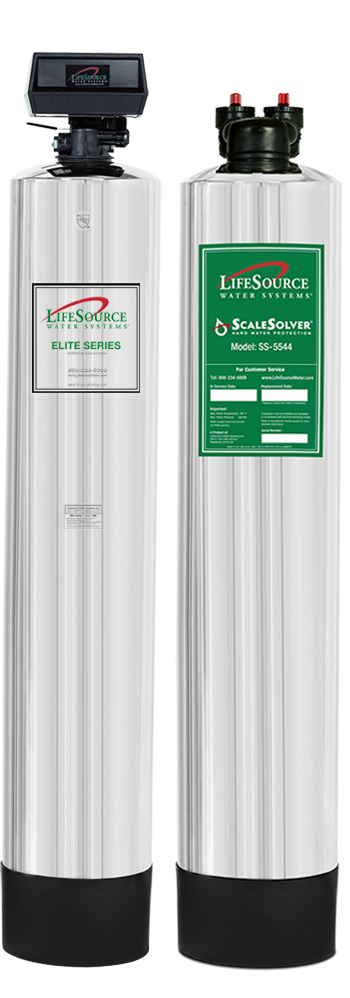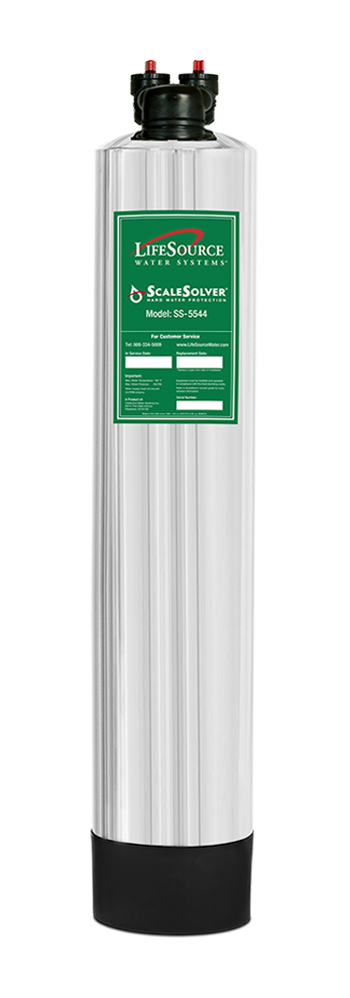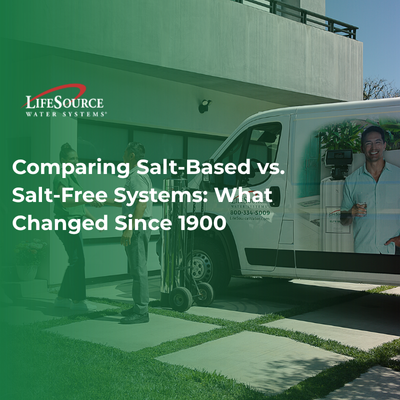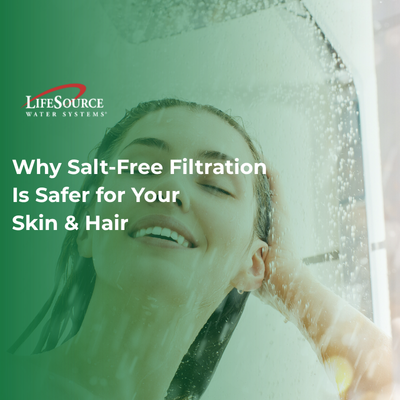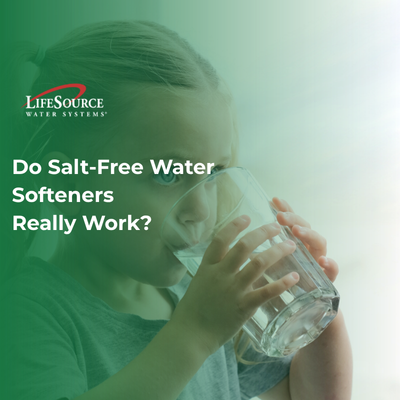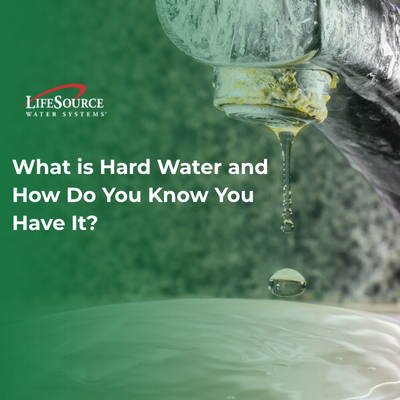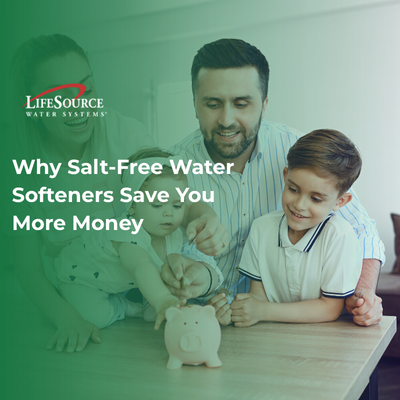
What is Hard Water and How Do You Know You Have It?
You’ve probably heard the term “hard water,” but do you know what it actually means, or how it could be affecting your home?
If your dishes come out spotted, your skin feels dry after a shower, or your appliances seem to wear out too fast, you might be dealing with hard water. In this guide, we’ll explain what is considered hard water, how to recognize it, and what treatment options make the most sense, including salt-free hard water solutions from LifeSource.
Hard water is caused by high levels of calcium and magnesium in groundwater. These naturally occurring minerals dissolve into the water supply as it travels through rock and soil. When that mineral-rich water reaches your home, it brings those same minerals into your plumbing.
The level of hardness is typically measured in grains per gallon (gpg):
- 0–3 gpg = Soft
- 4–7 gpg = Moderately hard
- 8–14 gpg = Hard
- 15+ gpg = Very hard
You can check your local hardness level through your municipal water report or by referencing the USGS Water Hardness Map.
Not sure if you’re dealing with hard water? These are the most common red flags:
Spots on dishes or glassware:
Even after using the dishwasher, hard water can leave behind chalky or cloudy spots.
Soap that won’t lather well:
Hard water makes it harder for soap and shampoo to foam and rinse off properly.
Dry skin and dull hair:
Chlorine and mineral content can strip your skin of moisture and leave hair feeling flat or brittle.
Limescale on faucets and appliances:
White, crusty buildup around fixtures is a telltale sign of calcium deposits in your water.
The effects of hard water go far beyond spots and streaks. Over time, it can do real damage to your home’s plumbing and appliances:
- Shortened appliance lifespan: Scale buildup reduces the efficiency and lifespan of water heaters, dishwashers, and washing machines.
- Higher utility bills: Limescale acts as insulation inside your water heater, making it work harder and use more energy.
- Plumbing damage: Mineral deposits can clog pipes and corrode fixtures, leading to expensive repairs or replacements.
If you’ve confirmed your home has hard water, here are your main treatment paths:
Salt-Based Softeners:
These remove calcium and magnesium through ion exchange, replacing them with sodium. While effective for scale prevention, they add salt to your water, require maintenance, and are banned in some areas.
Salt-Free Water Conditioners:
These systems, like LifeSource, don’t remove minerals; they neutralize them. That means no added sodium, no slippery feel, and no chemicals. Plus, they’re eco-friendly and maintenance-free.
Filtration + Conditioning:
The best results come from combining filtration and scale prevention. Filters improve taste and reduce chlorine and sediment, while conditioners prevent damage from hard minerals.
Related Resource: Salt-Free Softener Benefits
At LifeSource, we provide a complete, certified system that conditions and filters your water at the point of entry, meaning every tap in your home gets high-quality water.
Why homeowners choose us:
- No salt, no backwashing, no maintenance
- Retains healthy minerals like calcium and magnesium
- Trusted for over 40 years
- NSF/ANSI certified performance
- Systems built to last 10+ years
We serve some of the hardest water regions in the U.S., including:
- Phoenix, AZ (15–20 gpg)
- Las Vegas, NV (16–18 gpg)
- Los Angeles, CA (12–15 gpg)
- San Antonio, TX (17–20 gpg)
- San Jose, CA (14–30 gpg)
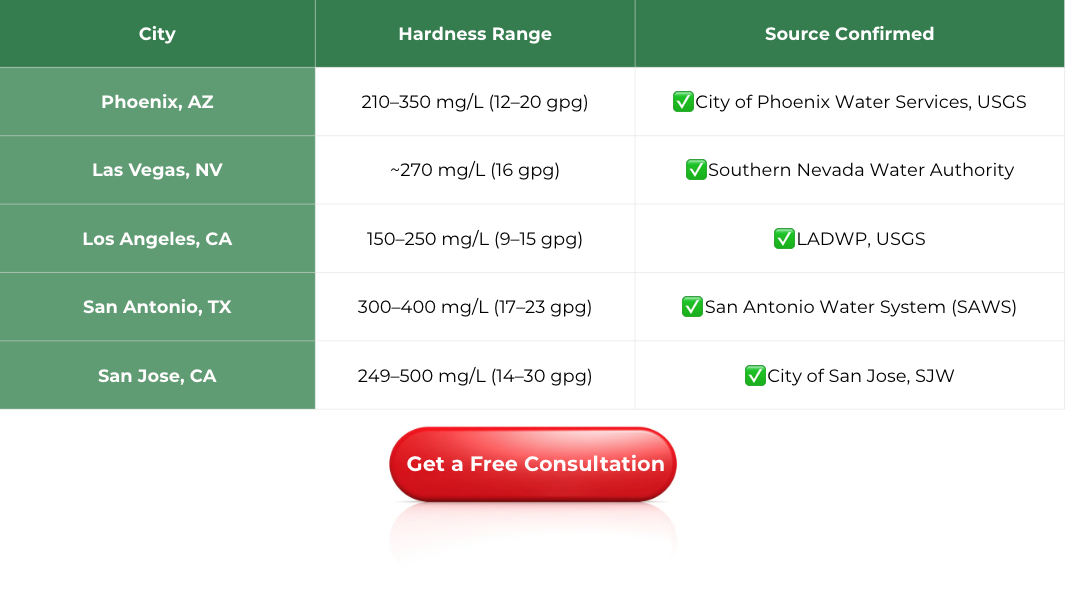
Example Hardness Levels by City
If you live in one of these areas, or anywhere with visibly hard water, LifeSource offers a smart, salt-free alternative that protects your home without compromising water quality.

